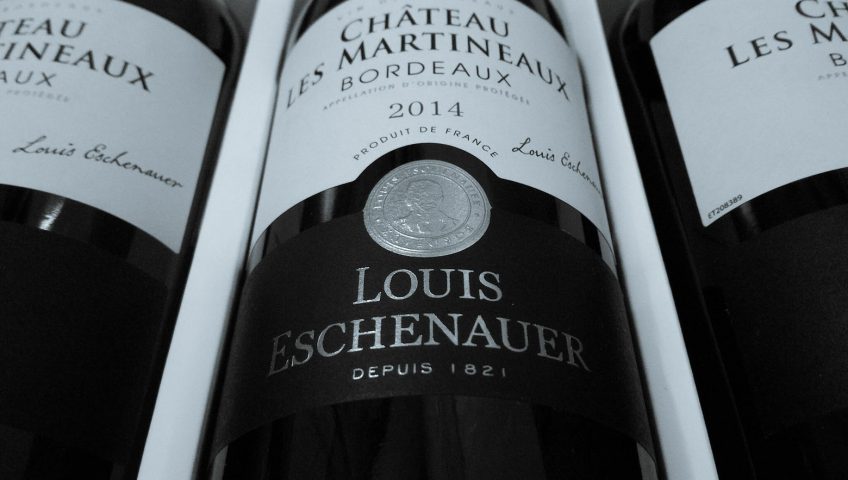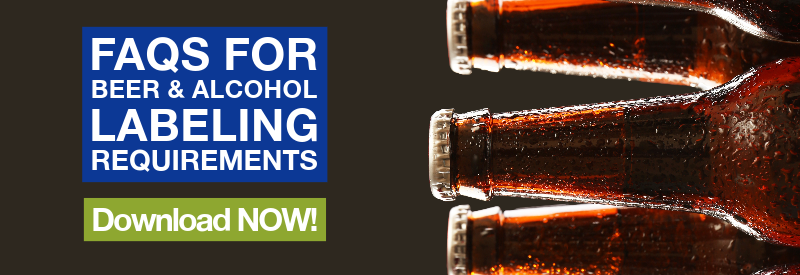
How Unique Product Labels Make Your Product Pop
How do you get consumers to choose your product over all the choices on the shelf? Product packaging combines graphic design, fonts and typography, and logo design with unique label materials to build your brand identity and make your product and brand name stand out from the rest.
Not sure where to start? Try out design ideas to make unique product labels that make you rise above the crowd.
Spot UV Finishes
The top coat on your labels protects the underlying layers and affects the appearance of your graphics. In the past, you only had a choice of gloss or matte finishes. Spot UV finishes use ultraviolet light to cure clear inks and varnishes, so you can have multiple finishes on one label. Once reserved for business cards and high-end stationery, this process is rapidly falling in price thanks to improvements in UV light technology. Spot UV lets you use gloss print on graphics to help them pop or create contrasting patterns over blank spaces.
Embossing
Embossing makes your text and graphics literally stand out. It also lets you apply a pattern across the entire label, providing a unique texture that would otherwise require expensive backing stock to achieve.
The cost of label embossing can vary widely, depending on run sizes and designs. Patterns are relatively cheap, but certain design elements like detailed, rounded and high-definition embossing requires expensive tooling. However, the cost might be worth it to give luxury products a premium unboxing experience.
Metallic Foil
While standard printing offers a wide range of bright colors, nothing has the visual pop of metallic surfaces. Once reserved for the loudest and brashest product packaging design, new manufacturing techniques extend its versatility. Finishes can be added on top of foil, leaving a surface that is both matte and reflective. By applying contrasting finishes, it’s possible to create eye-catching patterns.
Dry Peel Labels
Dry peel labels use an adhesive strong enough to keep the label on the product but still release easily when peeled off by the end user. Translucent adhesives are available, letting you print on the inside of the label. This is a great way to add recipes, coupons and other useful information. Dry peel labels are also great for labels that need to be removed before recycling the container.
Resealable Labels
Like dry peel labels, resealable labels use an easy-to-remove adhesive. However, this adhesive stays tacky and allows the label to be peeled off and put back in place multiple times. Resealable labels are great for sealing packages that contain products that aren’t used all at once. They’re commonly used as food labels on products like lunch meat packages and coffee bags.
Fold-Out Labels
Sometimes, you don’t have enough space for the information you need on your packaging label. Fold-out labels print as a single sheet; one end is folded and taped or glued to the rest of the label. Resealable booklets use the same construction method, adding reusable glue. That way the label can fold back into place for storage. Fold-out labels are common in pharmaceuticals where legal labeling requirements can easily exceed the space on the container.
Die Cut Labels
It’s common for pressure-activated labels to have non-standard shapes. When you’re labeling round products, the label needs to be slightly over- or under-square to compensate for the container’s angled surface. Even a seemingly flat plastic cylinder has a one to two-degree angle to help it release from the mold during manufacturing.
Die-cut labels take this a step further, allowing you to use intricate shapes on your packaging. Like embossing, the possibilities are endless, but so is the price. Basic shapes are inexpensive, but complex patterns require more work and specialty tools.
Clear Labels
Do you want to show off what’s inside your containers? A clear label keeps the contents from being obscured. These are popular on products where it helps to see what’s inside, whether it’s a bottle of fine whiskey or a jar of colorful candy. These labels are very popular with producers of high-quality products.
Clear labels also provide the look of an intricate die-cut label at a lower cost. If you want to use these with one of our machines (like our wine bottle labeler), you need a conductive sensor. This replaces the light sensor, letting the labeler detect the label position using paper thickness instead of opacity.
Thermochromic Ink
Temperature-sensitive inks have been used for decades to protect products that can’t exceed specific environmental conditions. In 2007, Coors creatively used this ink, showing their beer is cold by revealing a mountain range on their labels.
Since the Coors debut, these inks have been used on everything from Coca-Cola cans and dairy products to microwavable soups and pancake syrups. Inks are available with a range of activation temperatures to use for both hot and cold products.
Holiday Labels
Holiday-themed gift packs are a popular gift, and the Alcohol Tobacco Tax and Trade Bureau (TTB) has an exception for holiday labeling. That means you don’t need to submit a new Certificate of Label Approval (COLA) for your packaging, as long as these unique product labels are otherwise compliant. To make the switch easier, The TTB has an online tool that helps you check regulatory compatibility with your label changes.
Print and Apply Labeling
On-site label printing is mostly used for important information, like lot numbers and expiration dates. However, printing can also entertain your customers. Adding fortunes and trivia has long been a popular design trend on the packaging. They’re also useful for contests, letting you add container-specific information to gather buyer data.
We offer printing-capable versions of our most popular machines. Print-apply machines offer the same label capabilities as standard models, while an onboard computer and print engine handle formatting and printing. You just need to connect it to your operating technology system to feed it information.
Looking for Inspiration?
What does it take to make an eye-catching label design? Each year, industry platform Dieline features the best in packaging design around the world. Three winners of the 2022 Dieline Awards used these techniques in their design process to create unique custom labels:
- Two Drifters Carbon Negative Rum uses a matte finish and a gold foil signature, giving their product a premium look. The tamper-evident label also gets some attention, using gold foil lettering over a purple background.
- TOASTea lager uses a simple triangular edge cut along the top of the label, adding some visual interest while allowing the rest of the label to stay plain.
- Turmeon Vermouth uses classic graphics in a unique format. Instead of a rectangular label, the front panel is broken into three die-cut labels, separating the text with a pair of metallic hearts.
Get the Equipment You Need for Your New Labels
Of course, not all products are the same. What works for wine bottle labels probably won’t work for skincare or cosmetic labels or CBD products; it’s essential to know your audience when you set out to make your custom product labels.
No matter what unique product label design you settle on, CTM Labeling Systems has the equipment you need to apply your labels to your products quickly and accurately. Contact us to be in touch with a local distributor. They’ll work with you to find the best label solution that fits your production needs and your label designs.





